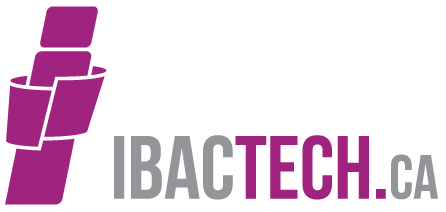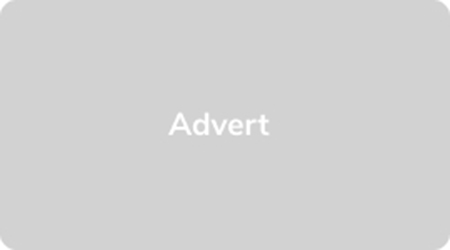Future One is a cooperative effort of the Independent Insurance Agents & Brokers of America (IIABA) and independent agency companies. It sponsors a variety of programs to enhance the independent agency system and agency-carrier relationships, both legislatively and in the business environment.
One of Future One’s major efforts has been the Agency Universe Study (AUS), first conducted in 1983. The study was repeated at 4-5 year intervals over the next 13 years (1987, 1992, 1996, 2000) and, starting in 2002, has been conducted biennially to track the fast-paced changes in the industry.
The AUS continues to provide information – much of it unavailable anywhere else – that is useful to independent agency principals, independent agency carriers, and the IIABA in its public information and education efforts.
ACT is providing this overview of the technology–focused results of this 2020 survey. Far more detail, comparison charts, and insight are available in the Management Summary and Full Report, both of which can be ordered on the IIABA AUS webpage.
In acknowledgement of the pandemic and its impact on agents and their customers, the traditional March fielding period for the study was halted, and the study re-started in late 2020. The response rate to the survey this year fell to an all-time low. In order to increase the number of completed interviews to ensure we collected enough completed surveys in order to look at all of the various subgroups, we also employed an open link. The link was included in various newsletters and communications to agents in general. This allowed agents who were not included in the carrier sample to complete the survey.
1,437 respondents were included in the study and the geography of the respondents is as follows:
| Northeast | CT, PA, MA, ME, NH, NJ, NY, RI, VT | 15% of responding agencies |
| Midwest | IA, IL, IN, KS, MI, MN, MO, ND, NE, OH, SD, WI | 33% of responding agencies |
| South | AL, AR, DC, DE, FL, GA, KY, LA, MD, MS, NC, OK, SC, TN, TX, VA, WV | 35% of responding agencies |
| West | AK, AZ, CA, CO, HI, ID, MT, NM, NV, OR, UT, WY, WA | 17% of responding agencies |
High-Level Observations
In 2020, the estimated total number of independent property/casualty agents and brokers in the United States stands at 36,000. Based on MarketStance data, in 2020, the estimated percentage of Small agencies (with less than $150,000 in revenue) stands at 32%. At the other end of the scale, Jumbo agencies ($10 million+ in revenue) now account for 2% of the universe.
- Agencies are most comfortable allowing customers to use self-service to get policy documents/ID cards (72%). One in five or fewer would be comfortable with customers obtaining policy quotes, making policy changes, and purchasing policies via self-serve.
- Marketing budgets have decreased directionally this wave after increasing over the past three waves of the research. (By “directional,” we are referring to differences that are not large enough to be statistically significant.) As in 2018, social media/digital marketing and agency website development are the most important marketing activities.
- Social media continues to grow in importance (58% select as a top activity compared to 49% in 2018), while print advertising and Yellow Pages activity is on the decline. Facebook is used by 83% of agencies and LinkedIn by 58% of agencies, with other social media channels used much less often. Social media is primarily used to build the agency’s brand and attract new prospects.
- Agencies continue to leverage technology; six in ten use a comparative rater for personal lines, and more than eight in ten use agency management systems. AMS systems are most likely to be used for customer view/search.
- Use of paperless office for commercial lines has increased since 2018, as have electronic communications including texting with clients (up to 64% from 50%), agency e-signature tools (up to 59% from 42%), and carrier e-signature tools (up to 53% from 38%).
- Nearly half of agents are likely to agree that insureds are just as likely to accept e-documents as paper (49%) and four in ten (39%) agree that they have seen significant cost savings by using carriers’ paperless communication options.
- The need for cyber policies has increased in 2020 (66% vs. 56%). This figure is notably higher among Large and Jumbo agencies, however (89%, 88%, respectively). Three in four (78%) offer cyber policies to customers; Medium-Large, Large, and Jumbo agencies are more likely to do so (95%, 97%, 96% respectively).
Special COVID-19 Technology-Related Impact Information
- About one in four agencies report COVID-19 had a significant impact on their operations (26%), revenue (22%), and commercial lines customer base (27%).
- Small agencies (34%) and newer agencies (32%) are more likely to report a significant impact on their revenue.
- Maintaining employee engagement and having the IT infrastructure to support work-from-home capabilities are the top challenges during the pandemic.
- Going forward, building an online presence for marketing and implementing/improving online business tools are the most important factors in succeeding in 2021.
- Top areas needing support as a result of the pandemic are finding new business opportunities and offering digital tools and support with digital servicing.
Technology Section; High-level Findings
Marketing Budget:
% of Agencies who include each technology activity as part of Marketing Program
| 2018 | 2020 | Change | |
| Social Media | 48% | 58% | +10% |
| Creating/Maintaining Website | 58% | 49% | -9% |
| Search Engine Optimization (SEO) | 31% | 30% | – 1% |
| Creating/maintaining portal technology | 29% | 30% | +1% |
| E-marketing activities | 20% | 20% | — |
| Print Advertising | 15% | 7% | – 8% |
- Nearly all (90%) engage in at least one marketing activity.
- Large and Jumbo agencies tend to place more importance on client industry associations and emarketing. Medium Large agencies are highly focused on social media marketing and portal tech; newer agencies focus more on social media than older agencies do. Small agencies are least likely to engage in any marketing activity (78%).
Overall Agency Technology Challenges:
| 2018 | 2020 | Change | |
| Marketing agency effectively on the internet |
55% | 41% | -14% |
| Dealing with multiple carrier interfaces | 49% | 38% | -11% |
| Keeping pace with technology changes | 32% | 28% | -4% |
| Overall cost of technology | 35% | 26% | -9% |
| Ensuring data transmission confidentiality | 26% | 14% | -12% |
- Although marketing the agency effectively on the Internet and dealing with multiple carrier interfaces remain as the top technological challenges those challenges experienced a significant drop in their ranking by agencies.
- Small to Medium agencies feel particularly challenged to market their agency on the Internet, ensuring confidentiality, and realizing efficiencies to justify tech costs; Larger agencies are most likely to be challenged in staff adoption of new workflows/technologies.
Comparative Raters:
Highest utilization in Personal Lines:
| 2018 | 2020 | Change | |
|---|---|---|---|
| EZLynx | 21% | 23% | +2% |
| PL Rating (Vertafore) | 13% | 15% | +2% |
| Applied Rater/SEMCAT | 4% | 6% | +2% |
| TurboRater (ITC) | 2% | 4% | +2% |
| WinRater (Boston Software) | 1% | 2% | +1% |
| Other | 1% | 2% | +1% |
| Do Not Use Comparative Rater | 43% | 40% | -3% |
- Six in ten agencies use comparative raters; although use is fragmented, mentions of EZLynx and PL Rating are most common.
- Larger agencies are more likely to use comparative raters in general, and to mention PL Rating specifically.
Management Systems:
- Eight in ten agencies (80%) use agency management systems for both personal lines and commercial lines.
- Almost all Medium, Large, and Jumbo agencies use an AMS.
Management System Functions (PL and CL):
Note: green font indicates increase from 2018, red font indicates decrease, black font is ‘no change’ or new to survey
| Function | PL | CL |
| Customer view/search | 85% | 86% |
| eDocs & Messages | 68% | 68% |
| Inquiries on claims, billing, etc. | 67% | 67% |
| Endorsements | 63% | 66% |
| Real Time Auto Quotes | 57% | — |
| Real Time Home Quotes | 60% | — |
| Rate Quote Requests | — | 48% |
| Bridging quotes from mgmt system | 62% | 48% |
| Payments | 58% | 60% |
| Policy Issue | 55% | 52% |
| Claims Reporting | 49% | 55% |
| Carrier Loss Runs | 42% | 48% |
| Availability of sales and marketing info* | 36% | 40% |
| Digital distribution/selling** | 33% | 37% |
*Newly added in 2020 survey for PL
**Newly added in 2020 survey for PL & CL
Personal Lines:
- Agencies place a great deal of value on key personal lines agency management system functions, especially customer view/search.
- The value of real-time quotes for auto insurance has decreased in 2020. Sales and marketing info and digital distribution are viewed as least valuable.
Commercial Lines:
- As with personal lines, customer view/search is most valuable and is seen as more valuable in 2020 for commercial lines as well.
- Agents are more likely to use both customer view search and billing claims inquiries in 2020.
- Policy issue is less likely to be seen as valuable in 2020. For Commercial Lines, availability of sales and marketing info is more likely to be used in 2020.
Overall processing technologies used:
| 2018 | 2020 | Change | |
| Personal Lines Download | 69% | 75% | +6% |
| Commercial Lines Download | 55% | 65% | +10% |
| Carrier ePolicy Delivery to agency | 55% | 60% | +5% |
| Direct Bill Commissions Download | 52% | 53% | +1% |
| Paperless office (Commercial Lines) | 46% | 57% | +9% |
| Agency ePolicy delivery to clients | 46% | 52% | +5% |
| Secure email | 34% | 41% | +7% |
- The use of processing technology overall increased in 2020. Three in four agencies use personal lines download tools and two in three use commercial lines download tools.
- Use of paperless office for commercial lines increased from 2018.
- For all processing technologies, usage increases with agency size, with Jumbo agencies particularly likely to use the technologies.
Electronic Communications Used:
| 2018 | 2020 | Change | |
| Texting with clients | 50% | 64% | +14% |
| Agency eSignature solutions | 42% | 59% | +17% |
| Carrier eSignature solutions | 39% | 53% | +14% |
| Video chat with customers | 3% | 16% | +13% |
| Agency 24-hr customer self-serve portal | 10% | 13% | +3% |
| Online chat with clients | 8% | 12% | +4% |
| Mobile apps from the carrier | 17% | 32% | +15% |
| Mobile apps for clients | 15% | 10% | -5% |
| Mobile app from AMS | 7% | 9% | +2% |
| Automated Chatbots | 2% | 3% | +1% |
- Not surprisingly, the use of electronic communications tech increased overall in 2020, with most forms of communication increasing. Texting with clients continues to increase.
- Use of technology varies with agency size. For example, Jumbo agencies are more likely to use video chat (33%) and an agency self-service portal (38%).
- 15% of Small agencies say they use none of these technologies compared to 2% or less of Jumbo,
Large and Medium-Large agencies.
Attitudes Towards Technology:
These responses are ranked as ‘6’ or ‘7’ on a 7-point scale.
| 2018 | 2020 | Change | |
| Agency sees need for an agency cyber liability policy |
56% | 66% | +10% |
| Achieved improvements through use of new technologies |
47% | 47% | — |
| Agency believes digital marketing is a core discipline |
45% | 46% | +1% |
| Agency has implemented written security policy |
35% | 34% | -1% |
| Agency has a written disaster recovery plan/trains employees |
26% | 24% | -1% |
- Two in three agencies see a need for their own cyber liability policy, increasing in 2020. Almost half achieved improvement in productivity due to tech and believe digital marketing has become a core marketing effort.
- Jumbo and Large agencies much more likely than small agencies to see the need for their own cyber liability policy (89%/89% vs. 51%).
- Jumbo agencies are most likely to have implemented a written security policy and monitor compliance (70%) and have a written disaster recovery plan (55%).
Perceptions on Electronic/Digital Resources:
| 2018 | 2020 | Change | |
| Insureds are just as likely to accept edocuments as paper | 44% | 49% | +5% |
| Agency has seen significant cost savings by offering paperless options offered by carriers |
38% | 39% | +1% |
| Agency has seen significant cost savings by offering customers paperless communications options |
34% | 37% | +3% |
| Agency measures ROI in use of traditional marketing |
21% | 26% | +5% |
| Agency measures ROI in use of digital/social media marketing |
19% | 19% | — |
- Perceptions of digital resources has remained stable in 2020.
- Jumbo agencies are more likely to agree that are likely to accept e-docs (73%) while small agencies are more likely to agree that their agency measures ROI on the use of traditional marketing








